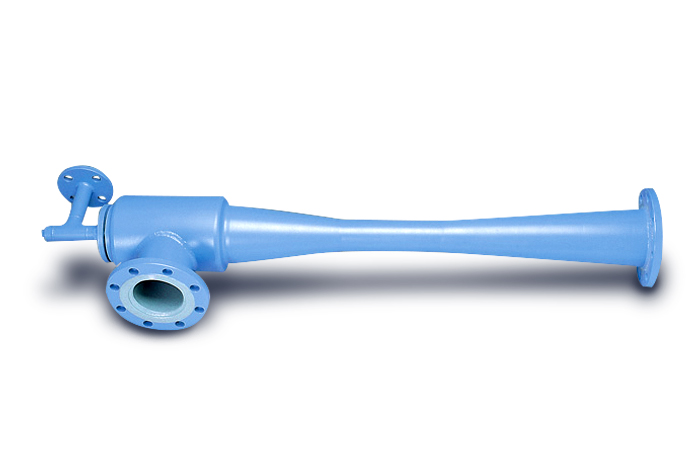
As a stripping system for framo ballast pumps.For pumping out water from bosun store, chain locker, etc.Foam applicator in fire extinguishing system.As self-priming system for centrifugal pumps.
#Eductor vs ejector generator

Particles lodged in the nozzle or throat can be removed with a soft material such as wood. The most common cause of trouble in the eductor is restriction of fluid flow in the nozzle or throat with foriegn particles. Maintenance and Troubleshooting of Eductor on Ships Clogged Nozzle or Throat Again, higher discharge head (or back pressure) results in reduced suction capacity.Īlso, driving flow capacity curve shown below gives us the driving capacity for a particular driving pressure. On the other hand, reduction of driving pressure below design pressure leads to reduction in suction capacity. Increasing driving fluid pressure above designed pressure will not increase the design suction capacity. For example, keeping discharge head as 6 mAq, suction capacity is 3 m3/hr and 5 m3/hr for driving pressures of 5 kg/cm2 and 7 kg/cm2 respectively.

The design parameters of a normal bilge eductor used on ships are the following:įrom the suction flow capacity curve shown below it can be seen that, for the same discharge head, suction capacity varies with a changes in driving fluid pressure.

So we have,Īs a result, we have a reduced pressure or vacuum at the point 2. According to Bernoulli’s principle, as fluid velocity increases pressure reduces. Hence it is understood that because of the geometry of the pipe shown above, fluid velocity increases at point 2. Since the discharge quantity is same throughout the pipe, the velocity of the fluid increases at point 2 compared to the velocity at point 1. The area of cross section at point 1 of the pipe is larger than compared to the area at point 2. The quantity (Q) of fluid flowing through the pipe is the product of area of cross section of the pipe (A) and velocity of the fluid (v) or,Ĭonsider a constant flow of fluid in the pipe. Now refer to the piping arrangement shown below. In other words it is an equation for conservation of energy. Refer to the simplified Bernoulli’s equation below for an in compressible flow.įrom the equation it is clear that, when there is an increase in velocity, pressure is reduced and vice versa. It states that an increase in the speed of a fluid occurs simultaneously with a reduction in pressure. Working Principle of Eductor on ShipsĮductor works on Bernoulli’s principle. This liquid or gas is pumped out through the driving fluid discharge. This low pressure or vacuum enables the eductor to suck liquid or gas from a certain area. Eductor require only a motive fluid or driving fluid for its operation, which allows it to use at any part of the ship including hazardous areas. When the driving fluid is passed through the eductor at the required capacity (which depends on the design of the eductor), a low pressure is created inside it. Eductor is a simple type of pump which works on the ‘venturi effect’ to pump out air, gas or liquid from a specified area.


 0 kommentar(er)
0 kommentar(er)
